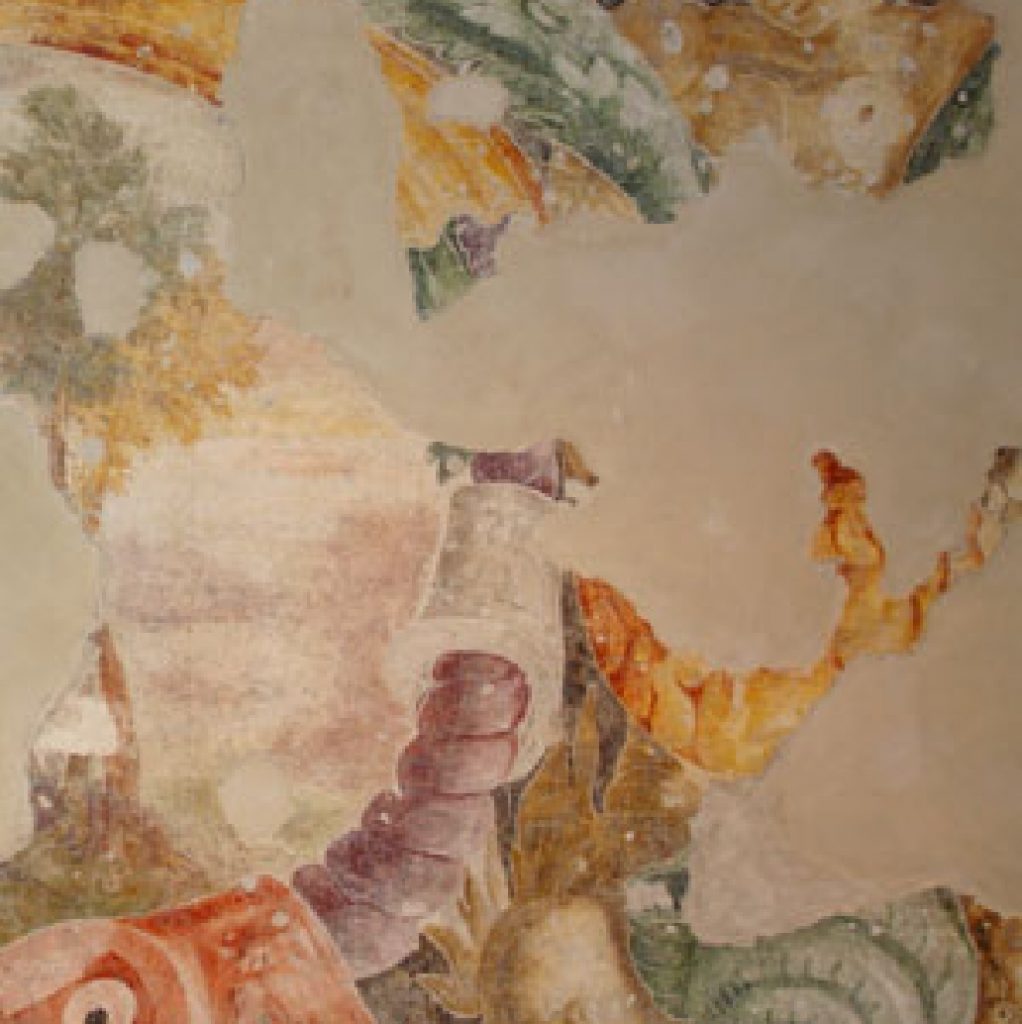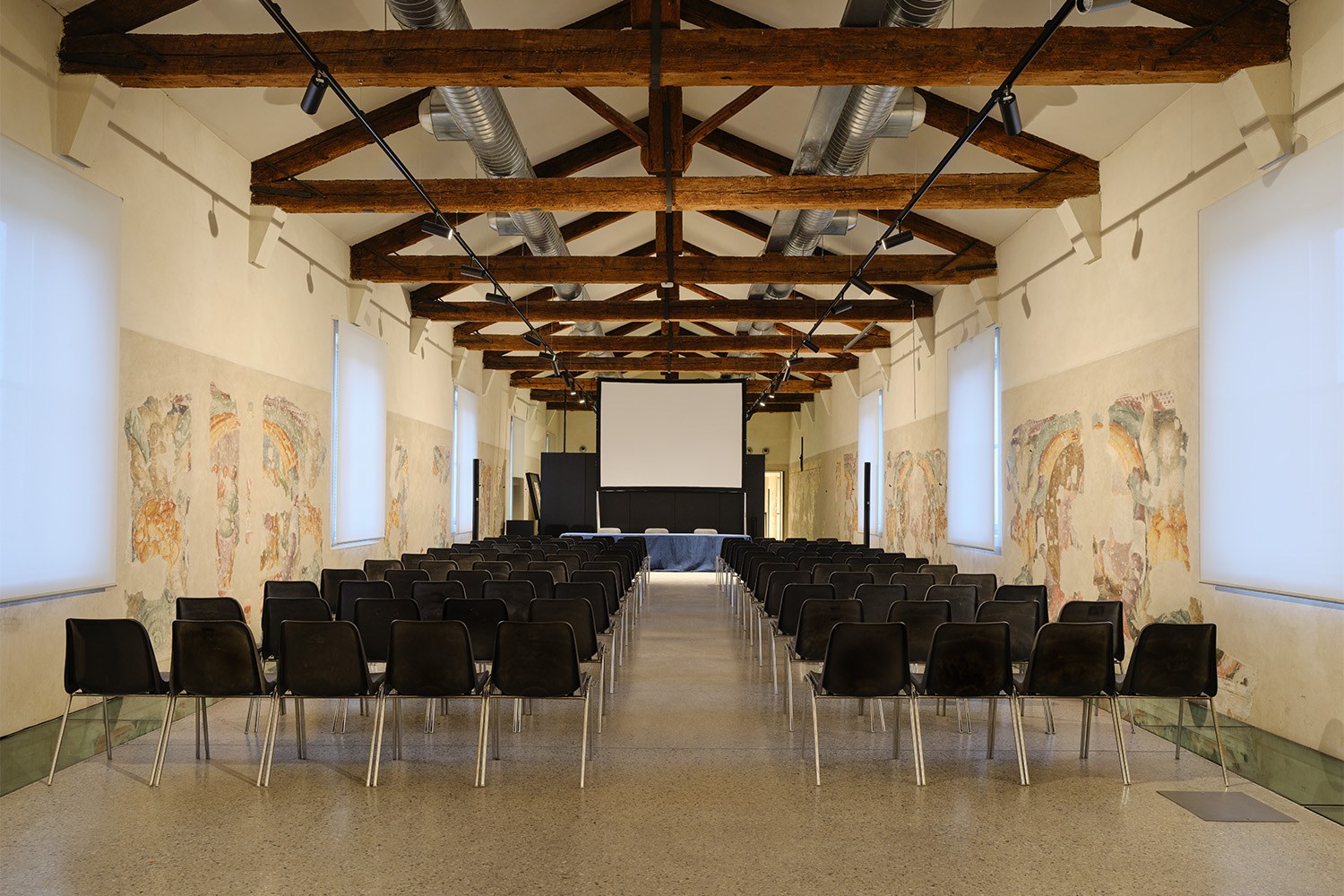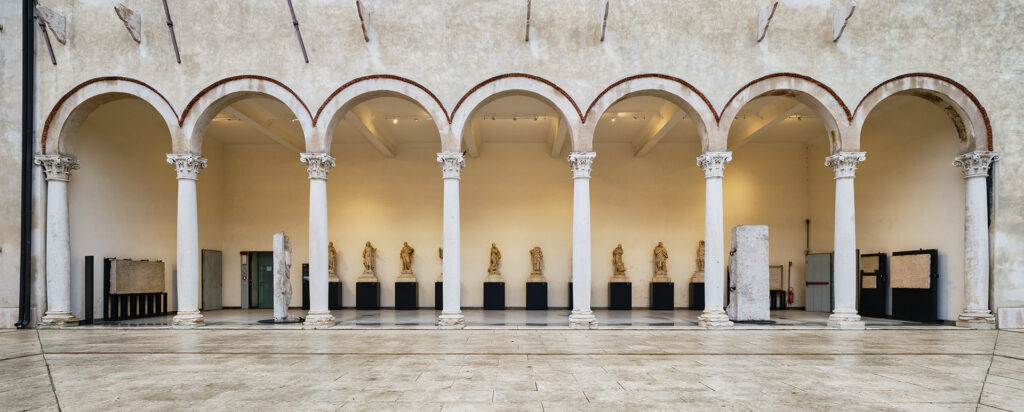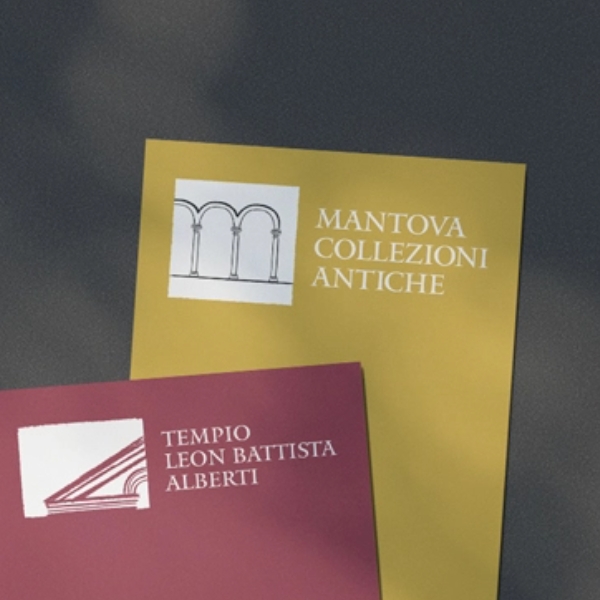
The vast rectangular room, more than thirty metres long, was divided in the middle of the 17th century by an attic that allowed for the creation of a second floor. Originally, the great hall rose more than seven metres, receiving light only from the north side where nine large windows opened. The room had a representative function and housed Mantegna’s nine large canvases depicting Caesar’s Triumphs, arranged in groups of three along the south wall and hung about two and a half metres high. The lower part of the walls, devoid of decoration, had, as was the custom in the Renaissance, a wooden covering, perhaps with seats.
On the shorter sides, the decoration of the room was completed by two paintings by Lorenzo Costa: the first, which is missing, depicted the Sacrifice to Hercules and presented Francesco II Gonzaga and his three sons; the second, signed and datable to 1522, is now in the National Gallery in Prague and depicts the appointment of Duke Frederick as general commander of the papal forces. The room was covered by a rich ceiling now preserved in the Ducal Palace. The room was used to host dinners, on festive occasions or to honour distinguished guests. The hall, which was raised in 1883, is covered by a ceiling supported by wooden trusses, probably original and moved at that time. The decoration on the walls shows two distinct motifs: on the shorter side to the east, a motif with a pergola and festoons; on the longer sides, a motif of large Baroque-style volutes opening onto natural landscapes. Similar decorations can be found in the two rooms to the east and west now reserved for offices.



